Won't Call the Midwife
With high rates of maternal mortality and coercion in hospital settings, more American women are exploring childbirth without any medical assistance whatsoever. The Free Birth Society provides community, resources, and validation for these convention buckers. But experts warn that choice comes at the expense of safety.

The jeep pulled up to the Emergency Room at Maui Memorial Medical Center around 4:30 a.m. on January 31, 2018, and Emilee Saldaya steeled herself for battle. She had never been to this hospital and knew that showing up in active labor with no records or relationship with a doctor could create problems if she wasn’t careful.
As Saldaya’s sister drove the car down the mountain, Saldaya and her husband, Jonny, made up a story to tell hospital staff: They had arrived on Maui when Saldaya was 38 weeks pregnant and planned to interview midwives, but labor had started out of nowhere; Saldaya had tried pushing and got nervous that her cervix was swollen, so she came to the hospital to be assessed. The last part was true, but she didn’t mention that she’d already been in labor for three days.
Saldaya declined requests to put on a hospital gown and pee in a cup, as well as offers for an epidural. The doctor performed a vaginal exam and announced that Saldaya was 9.5 centimeters dilated and that there didn’t appear to be any swelling; it was time to deliver the baby. The doctor told Saldaya to pull her knees up and start pushing.
That was all Saldaya needed to hear. “Whatever funk I’d been in is totally gone,” she says, recounting the experience. “I’m clear and totally in power again. I look over at Jonny with a shit-eating grin on my face and say, ‘You want to get out of here?’ He doesn’t skip a beat and says, ‘Hell yeah, I do, let’s roll.’ ”
Saldaya thanked the staff for their help and said she was declining to be admitted. According to Saldaya and Jonny’s memory of the conversation, the ob-gyn said, “But the baby could be born in the parking lot. Where will you go?”
“Home,” Saldaya said.
“Who will deliver you?” asked the doctor.
Stay In The Know
Get exclusive access to fashion and beauty trends, hot-off-the-press celebrity news, and more.
“Me,” Saldaya responded.
“Do you have any experience?”
“Not exactly.”
“Don’t you understand how dangerous that is?”
“That’s debatable, but I don’t have time for this,” Saldaya recalls saying. “I imagine you want me to sign your AMA [Against Medical Advice] form, so please write it now. I have to go have my baby.”
Saldaya shuffled out of the room to the nurses’ station, growling like a “wild woman.” The doctor handed her the AMA and said, “This is completely against my medical recommendation, but I can’t stop you, so if you need help, come back and we will help you.”
Saldaya and Jonny grabbed hands and made their way out of the labor and delivery ward. Every so often, Saldaya had a contraction and stopped to howl in the hallway. Nurses tried to send her in the opposite direction, assuming she was lost, not leaving. Twenty minutes later, they were home. Saldaya waddled to the bedroom and dropped to the floor. Within an hour, her daughter was born.
What I am so obsessed with is watching these women get fierce and be like, “F--k the system. I don’t need this. My intuition can be my guide.
Saldaya is the 35-year-old owner and founder of the Free Birth Society (FBS), an educational platform and online community dedicated to unassisted childbirth. That is, birth with no medical help at all: no doctor, no nurse, no licensed midwife present. While some unassisted births are not planned, a “free birth” is an active choice. It’s a deliberate rejection of the health-care system and a commitment to an ideal of childbirth that is autonomous and undisturbed. This is a radical idea that many people, and certainly the medical establishment, view as extreme, reckless, and naive. While home birth with midwives is becoming more widespread, free birth remains a fringe choice.
But the free-birth community is growing. Of the 35,000 births that occur in the home each year, the American College of Obstetricians and Gynecologists (ACOG) estimates that one in four of those are unattended. The Internet now boasts social-media groups, podcasts, webinars, videos, and books about unassisted childbirth. The Indie Birth Association, a group oriented toward birth outside the medical system, has nearly 100,000 followers on Facebook, and a video of a woman free birthing in a stream has attracted close to 100 million views on YouTube. Saldaya’s FBS has a mailing list of 16,000 people. Her podcast has more than 3 million downloads, and the Instagram account, filled with photos of euphoric, sweaty women hugging newborns, has 60,000 followers. Thousands of people have purchased the group’s course, “The Complete Guide to Freebirth,” which costs $399.
“I didn’t have any idea the free-birth community was as big as it was,” Saldaya says, reflecting on the launch of her podcast and Facebook group four years ago. “Then it took off like wildfire.”
For as long as women have given birth, they have given birth alone or without professional medical support. Unassisted childbirth is not new, but the organized ecosystem around it is. In a country with an advanced health-care system, why would anyone choose to forgo it completely?
One reason is the belief that birth is a physiological process. The body knows what to do, and interventions—like electronic monitoring, vaginal exams, labor induction, episiotomy, and epidurals—impede birth from unfolding as nature intends, a free birther would argue.
“A free birth is nothing special,” Saldaya says. “It’s just staying home and having your baby. But in a very short amount of time, we have convinced ourselves of the need to leave our homes.”
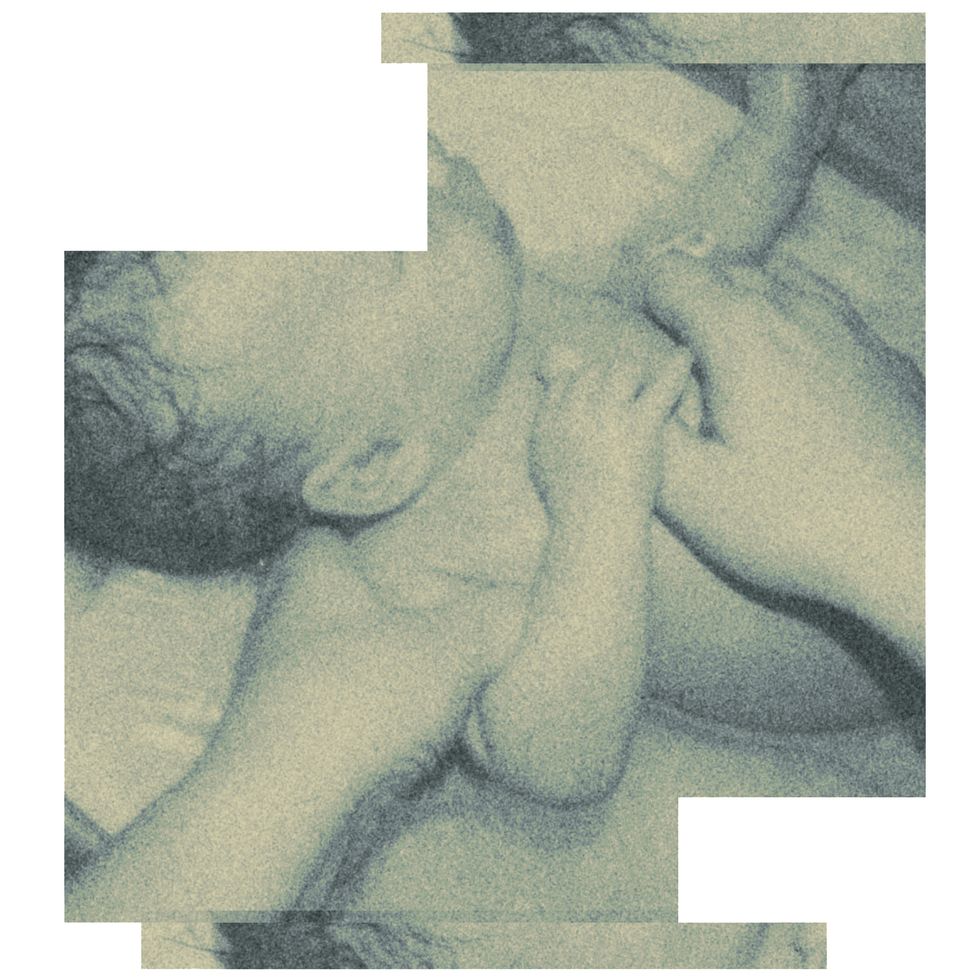
A tenet of free birthing is that doctors, nurses, and midwives don’t have more expertise or authority about what’s needed during birth than a mother, an assertion medical professionals push back on. Physicians go through years of rigorous education and training that enable them to identify issues when (or before) they arise and suggest courses of action. “We as OBs, midwives, trained birth attendants, and registered nurses know what to do in life-threatening scenarios,” says Toni Golen, acting chief of the Department of Obstetrics/Gynecology at Beth Israel Deaconess Medical Center in Boston. While a patient’s participation and input are essential in deciding when to intervene, she continues, “management of complications requires training and knowledge in order to make sure the mother and baby are safe and unharmed. There are specific maneuvers that take practice to become proficient, and they are not easy.”
As modern medicine advanced over the course of the 20th century, pregnancy and childbirth in the U.S. became a much safer experience, with rates of maternal mortality declining roughly 99 percent from 1918 to 1984. It also became a highly medicalized one. Today, 68 percent of pregnant women get epidurals or other spinal anesthesia, around 30 percent of pregnancies result in induced labor, and 32 percent of births are by C-section, a number the World Health Organization (WHO) and ACOG say is too high, in part because it poses a greater risk of maternal mortality and danger in future pregnancies. For most mothers, giving birth in a hospital, surrounded by trained professionals and modern technology, is what makes them feel safest—and they have positive birth experiences. Since 1987, however, maternal deaths have steadily risen, and the overuse of unnecessary medical interventions may be a contributing factor.
“We have this scientific reality, which is that women are dying in childbirth,” Golen says. “Certainly there are lots of reasons why that may be the case. Among them is that perhaps in the hospital environment, we are not listening to patients as well as we possibly can.”
One WHO report found that one in six women in the U.S. experience mistreatment during childbirth. Another survey of more than 2,000 doulas, childbirth educators, and labor and delivery nurses in the U.S. and Canada found that almost 90 percent had witnessed a health-care provider engaging in procedures “without giving a woman a choice or time to consider,” and nearly 60 percent had observed providers performing procedures “explicitly against the wishes of the woman.” Studies show that women, particularly Black women, are less likely to have their medical concerns taken seriously by doctors.
The fear of being pressured into unwanted and unnecessary interventions is one of the factors leading women to explore home birth. Out-of-hospital births represent under 2 percent of all births in the U.S. Although that’s a small portion, home births have increased by nearly 80 percent since 2004. The rise has accelerated since the outbreak of COVID-19, with midwives seeing surges in interest and demand; Saldaya says she has observed an uptick in interest in FBS since April 2020, with more people buying her course.
The safety of home versus hospital birth has been hotly debated for a century. The American Academy of Pediatrics does not recommend a home birth of any kind, stating, “Hospitals and accredited birth centers remain the safest settings for births in the U.S.” When asked for comment, ACOG said it does not have a committee opinion on unassisted childbirth but warned that among women who make no provisions for professional care, home births are associated with high rates of perinatal and neonatal mortality.
Patchwork state regulations and data-collection methods make it difficult to compare births across settings, and data around free birth does not exist, perhaps because women who participate in it want to remain outside the system. One landmark study of 16,924 planned home births found that for low-risk women, a planned home birth with trained midwives is not associated with “an increase in adverse outcomes.” However, home-birth midwifery is not widely accessible. In 14 states, certified professional midwives (CPM) are at risk of criminal prosecution for practicing. More than two thirds of planned home births are not covered by insurance, putting them out of reach for low-income families. (Hospital birth is also expensive: Women with employer-sponsored insurance pay an average of $4,500 out of pocket for labor, delivery, and postpartum care.)
For some free birthers, giving birth unassisted is the only affordable or accessible way to have a home birth. Others view licensed midwifery as an extension of the same medical model they want to avoid, referring to them as “medwives.” States that license home-birth midwives have rules about which mothers those midwives can serve. If a pregnancy goes past 42 weeks, if a mother is having a breech baby or twins, or if she had a previous C-section, a midwife may not be allowed to take her on as a client. There are also requirements involving if or when a midwife must transfer a patient to a hospital. To regulators, those restrictions are in place to protect both mother and baby; to free birthers, they give the state authority over personal health-care decisions. Some people come to FBS because they don’t think they can retain control over their birth any other way.
“I think women are really waking up, and they are tired of being abused,” says Saldaya. “What I am so obsessed with is watching these women get fierce and be like, ‘Fuck the system. I don’t need this. My intuition can be my guide.’ ”
Jess, 24, who is using her first name only because of privacy concerns, was pregnant with her first child in 2017 and planned on having a home birth with midwives. Although Jess liked her midwives, there were moments when she felt like they were pathologizing her and her pregnancy in a way that made her uncomfortable. She says they were concerned about the shape of her uterus and her history of anemia, factors Jess considered variations of normal. They also brought up statistics about Black women facing higher rates of preterm labor and maternal mortality. Though she appreciated the information, Jess says she wanted to be treated like an individual rather than being foisted into the category of “high-risk.”
“It was this white-savior thing: ‘Oh, we need to save you from this,’ ” Jess said in an episode of the FBS podcast. “But it’s not applicable to me. They assumed it was applicable to me because of the color of my skin, but them focusing on that didn’t serve me.”
Toward the end of Jess’s pregnancy, her baby was in a breech position, and her midwives told her to go to the hospital for an ultrasound. Jess didn’t want to because she knew the norm with breech babies was a C-section. She researched breech vaginal birth and still wanted to give birth at home, but her midwives said they would not or could not assist Jess if she chose not to go to the hospital, citing safety and licensure guidelines. That was the moment Jess felt they “turned” on her. Her options seemed to be a C-section or free birth, with nothing in between. “I was trapped,” Jess says. “I had no idea how to navigate speaking what I felt was right.”
A complication can happen so quickly, I worry someone could die before getting the proper attention. There’s a benefit to being in a place where we can optimize the chances of recovering.
Yolande Norris-Clark is a mother of eight who has free birthed six of her children and is a leader in the free-birth community. She maintains that efforts to codify safety create a narrow definition of normal; it’s not that safety is beside the point but rather that women should be trusted to determine their own parameters of acceptable risk.
“We get caught up in this giant monolith of concern-trolling: ‘How can we keep women and their babies safe?’ ” Norris-Clark, 40, says. “There is no person more invested in the outcomes of a birth than the woman herself. … Medical professionals believe they have a monopoly on what constitutes safety, and that idea is so repugnant to me.”
Golen argues that the role of physicians and nurses is to anticipate when something may be life-threatening and provide the patient with good advice. According to Johns Hopkins Medicine, about 8 percent of all pregnancies involve complications that may harm the mother or baby if left untreated. In the case of infections, shoulder dystocia, cord prolapse, or hemorrhage, having a medical professional present can be the difference between life and death.
“A complication can happen so quickly, I worry someone could die before getting the proper attention,” Golen says. “I think for those of us who see a lot of childbirths, it feels like it happens enough that there’s a benefit to being in a place where we can optimize the chances of recovering.”
In theory, women who give birth in hospitals or with licensed midwives can determine which interventions they do or don’t want. A long history of judicial (and ethical) precedent states that all patients, including pregnant women, have the right to refuse treatment. In reality, refusing treatment as a pregnant woman can be a fraught endeavor. There have been multiple instances of courts ordering women to have C-sections or of hospitals threatening to call child protective services to coerce compliance. The risk of legal or state intervention for forgoing prenatal care or refusing medical interventions is borne particularly by poor women and women of color.
That risk was on Jess’s mind when she went to the hospital at 37 weeks for an ultrasound, which confirmed her baby was breech. The ob-gyn said the baby looked too small, estimating he weighed three or four pounds, and recommended a C-section. Jess still wanted to try for a vaginal birth, but she says no one on her care team took that seriously. She worried that if she pushed back, she would be labeled an unfit mother. “If you don’t consent to their ideas for solutions, then [to them] you are a bad mom and don’t care about your baby,” Jess says.
She signed the paperwork and went into surgery. Her baby was born weighing six pounds, not four, and although no one can know the outcome had Jess tried to deliver her breech baby vaginally, she says she ultimately felt manipulated, lied to, and abused. When she got pregnant with her second child, in 2020, she wanted to avoid the painful experience of her first delivery. She had followed Saldaya on Instagram for a few years and felt drawn to the ethos she put forth. That summer, she applied to join the Free Birth Society.
Saldaya is petite, with a free-spirited vibe offset by the intense energy with which she does everything. She spent the first part of her career as a doula and midwife’s assistant in Los Angeles but became disillusioned by what she witnessed. “I attended births in captivity for over 10 years and saw so much violence, abuse … so much oppressive stuff in the wealthiest hospitals and some of the poorest—every race and socioeconomic class across the board,” she says. “The licensed midwives had bullshit reasons for transferring women to hospitals or being abusive themselves. I thought, Oh my God, there is no fucking way I can be part of this system.”
Around this time, Saldaya and Jonny were planning to have a child of their own. Saldaya realized that she did not want to participate in the birth system as a professional or as a mother. She Googled “home birth without midwives” and discovered women, including Laura Kaplan Shanley, Marilyn A. Moran, and Jeannine Parvati Baker, who had been thinking, speaking, and writing about free birth for decades.
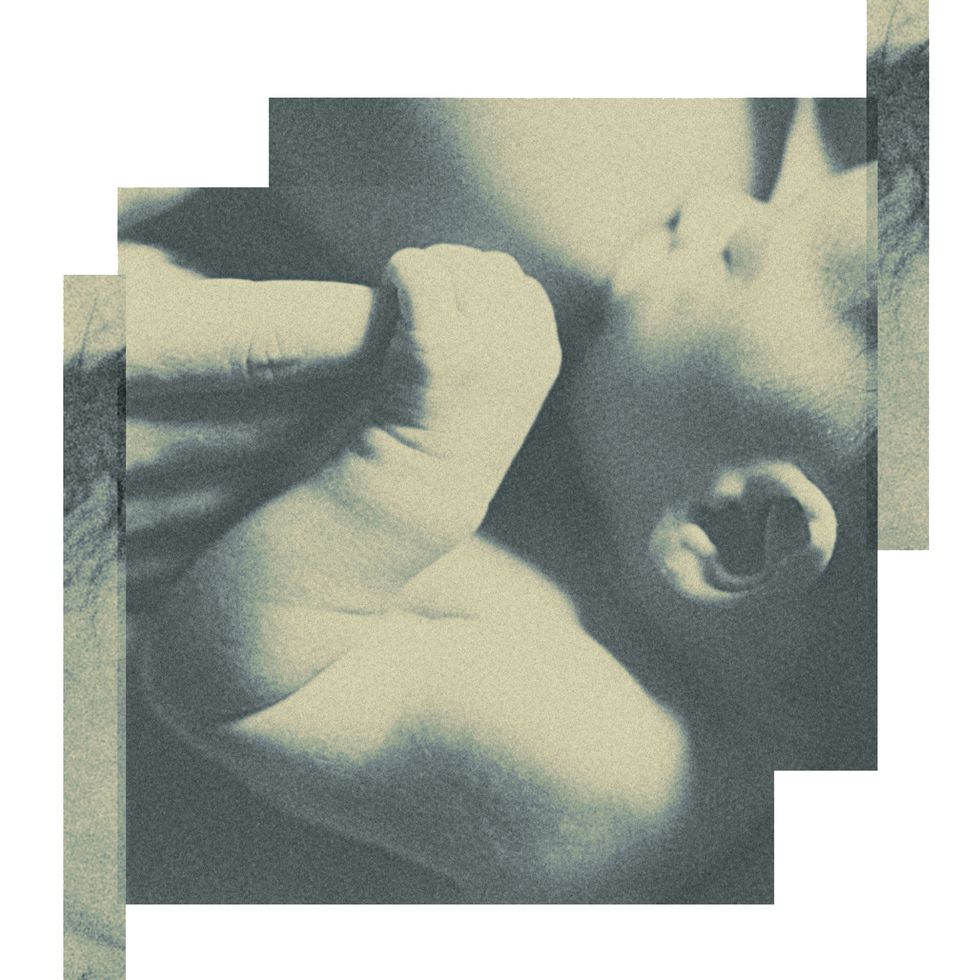
“That gave me language for all the stuff in my heart,” Saldaya says. “I thought, Hell yeah, I’m going to free birth. I take responsibility for my life in every other way, and I’m taking responsibility for my birth.”
Saldaya launched FBS in March 2017. Soon, she learned she was expecting. As her pregnancy progressed, so did FBS. But with growth came visibility that led to the public group’s dissolution.
In October 2018, a mother posted in the FBS Facebook group that her attempted free birth had ended in a stillbirth at a hospital. As reported by Emily Shugerman in the Daily Beast that November, there were “sock puppet” accounts in the group who had joined in order to monitor members. They got the story on the radar of a blogger for the faith-centered site Patheos. According to the Daily Beast, nine posts about the incident appeared in a two-week span with headlines like “Mother Decides to Have an Unassisted Childbirth and Kills Her Baby.” Saldaya was berated by hostile messages and death threats and accused of being a “baby-killer.” (The posts have since been removed from the Patheos website.) Saldaya decided to shut down the Facebook group.
At the time, it seemed like that might be the end of the Free Birth Society. But for all the strangers who sent vitriolic messages, Saldaya also received messages from women who said the space and connections it provided meant a lot to them. So on November 6, 2018, she relaunched FBS as a private social network with an admissions process and an annual membership fee of $108. She vets every applicant via video interview. The new group has nearly 600 paying members who span geography, demographics, and experiences. There are women who live in New York City and those who live deep in the woods, women who came to free birth after traumatic hospital experiences, first-time mothers drawn to the group’s ideals, and doulas disillusioned with mainstream medicine.
In interviews with 15 members of FBS, most said they received serious pushback from family, friends, coworkers, medical providers, and/or spouses when describing their plan to give birth unassisted. Because of the tremendous stigma, online communities have been a source of validation, support, and advice. “I went from the person [my colleagues] were so happy to hear was having a home birth to the crazy person. They questioned my rationality,” says Kayla Abeid, a 28-year-old chiropractor from South Carolina who free birthed her first child in May 2019. “I trust these other women [in FBS] to help me through my vulnerable moments and stay strong as a mother.”
After Jess’s first delivery, she was wary of midwives but still made an effort to hire one for her second child. She interviewed five midwives but didn’t find any who were willing to be as hands-off as she wanted. She went through her pregnancy without any prenatal care (referred to as a “wild pregnancy”) and at around 36 weeks resolved to have a free birth. Jess labored at home with her husband, her mom, and a friend present. Four and a half hours later, her daughter was born. “I had a freaking blast giving birth. I loved it so much,” Jess says. “The intensity was so beautiful and so difficult.”
Certainly, not all births go smoothly. There are mothers in FBS who have experienced loss, although they declined to speak for this story. The group doesn’t shy away from the topic, but it’s framed as something inevitable that must be accepted rather than something preventable that must be avoided at all costs. “The Free Birth Society understands that death is a part of life, and all paths contain their own risks,” Saldaya says. “Are babies dying in physiological birth? Yes. Are babies dying in over-medicalized birth? Yes.”
A common criticism of free-birth groups is that they serve as echo chambers where members encourage and reinforce dangerous behavior and emphasize autonomy to the point of harm. In some cohorts, “no assistance talk” is a rule, meaning members are not allowed to “talk about birth-related medical professionals or their opinions” or “suggest a member seek assistance/go in/seek care/get help/visit a midwife … unless they specifically ask for opinions of that nature.”
In February 2020, NBC published an article about free birth that focused on a woman named Judith whose baby was stillborn after she tried to deliver at home at nearly 45 weeks along. (The standard medical recommendation is to induce if pregnancy reaches 41 weeks.) Judith had taken a digital free-birthing course, participated in social-media groups dedicated to unassisted childbirth, and watched free-birth videos, including one denouncing induction as “an eviction from the womb.” As she passed the 43-week mark, she received messages of reassurance from people in those groups telling her to trust her body and listen to her instincts. To reporter Brandy Zadrozny, Judith said, “I think I brainwashed myself with the Internet.”
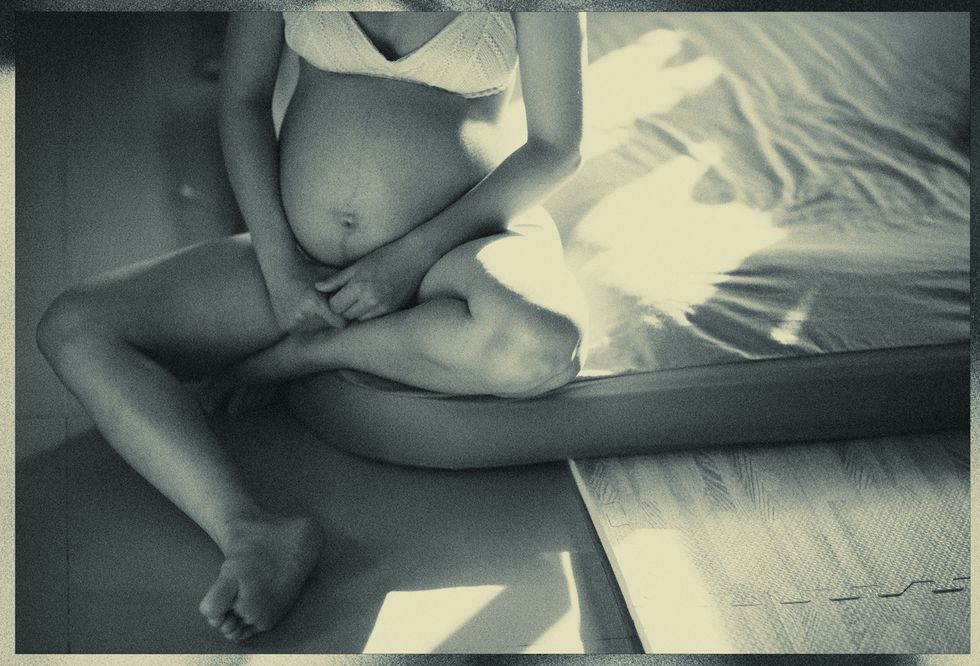
The free birthers interviewed for this story emphasized that they would go to the hospital in the event of an emergency but that they wanted it to be up to them, not a doctor or midwife, if or when they went. “I would never blindly or neglectfully choose to be outside the system,” Abeid says. “I wasn’t against any kind of outside assistance, but I would only choose that route if necessary.”
Knowing when assistance is necessary may not always be clear, however, particularly to someone in the throes of labor. Messages about the importance of “trusting birth” can insinuate that asking for help signals a lack of intuition, strength, or courage. Even Saldaya says that as she drove to the hospital, she felt like she had failed. Now, though, she appreciates her story because she gave birth on her own terms. Her claim is not that free birth is the right choice for everyone but rather that it is the right choice for some. “Free birth is not a gold standard. All I tried to do was carve out a space.”
But that space is designed to be insular, made up of members who share similar beliefs, a place to discuss what Saldaya calls “edgy topics.” The rejection of the medical system, the emphasis on autonomy and personal responsibility, and the glorification of womanhood tend to be part of a broader worldview. Some members do not vaccinate their children and many homeschool, for instance. The group is involved in efforts to oppose the Equality Act, which would define woman as a matter of gender identity rather than biological sex.
Saldaya is also expanding the group offline, trying to foster in-person connections through courses, workshops, and retreats. In 2020, Saldaya and Norris-Clark launched the Radical Birth Keeper School, a 12-week online training program that at least 150 women have attended. It’s billed as providing information and tools students can use to support one another during births—something that had started happening organically. They aim to scale that dynamic by creating a sort of underground network of “authentic midwives” who operate outside the traditional maternal health-care system.
In creating a system of their own, the women in the Free Birth Society are striving to maintain control over their fates. But the question remains: Are they controlling fate or tempting it?
This story appears in the Summer 2021 issue of Marie Claire.
Rebecca Grant is a freelance journalist based in Portland, Oregon who covers reproductive rights, health, and justice .
-
 Tyla's Coachella Outfit Pairs Dolce & Gabbana With Pandora
Tyla's Coachella Outfit Pairs Dolce & Gabbana With PandoraThe singer wore a gold version of the crystal bra made famous by Aaliyah.
By Amy Mackelden Published
-
 How Kate Middleton Is Influencing George's Fashion Choices
How Kate Middleton Is Influencing George's Fashion ChoicesThe future king's smart blazer is straight out of Princess Kate's style playbook.
By Amy Mackelden Published
-
 King Charles "Couldn't" Meet Prince Harry During U.K. Visit
King Charles "Couldn't" Meet Prince Harry During U.K. Visit"It could actually bring down a court case."
By Amy Mackelden Published
-
 When Your Body Is Your Brand
When Your Body Is Your BrandFor women whose livelihood is yoked to their physical self, the concept of wellness is highly complicated.
By Samantha Holender Last updated
-
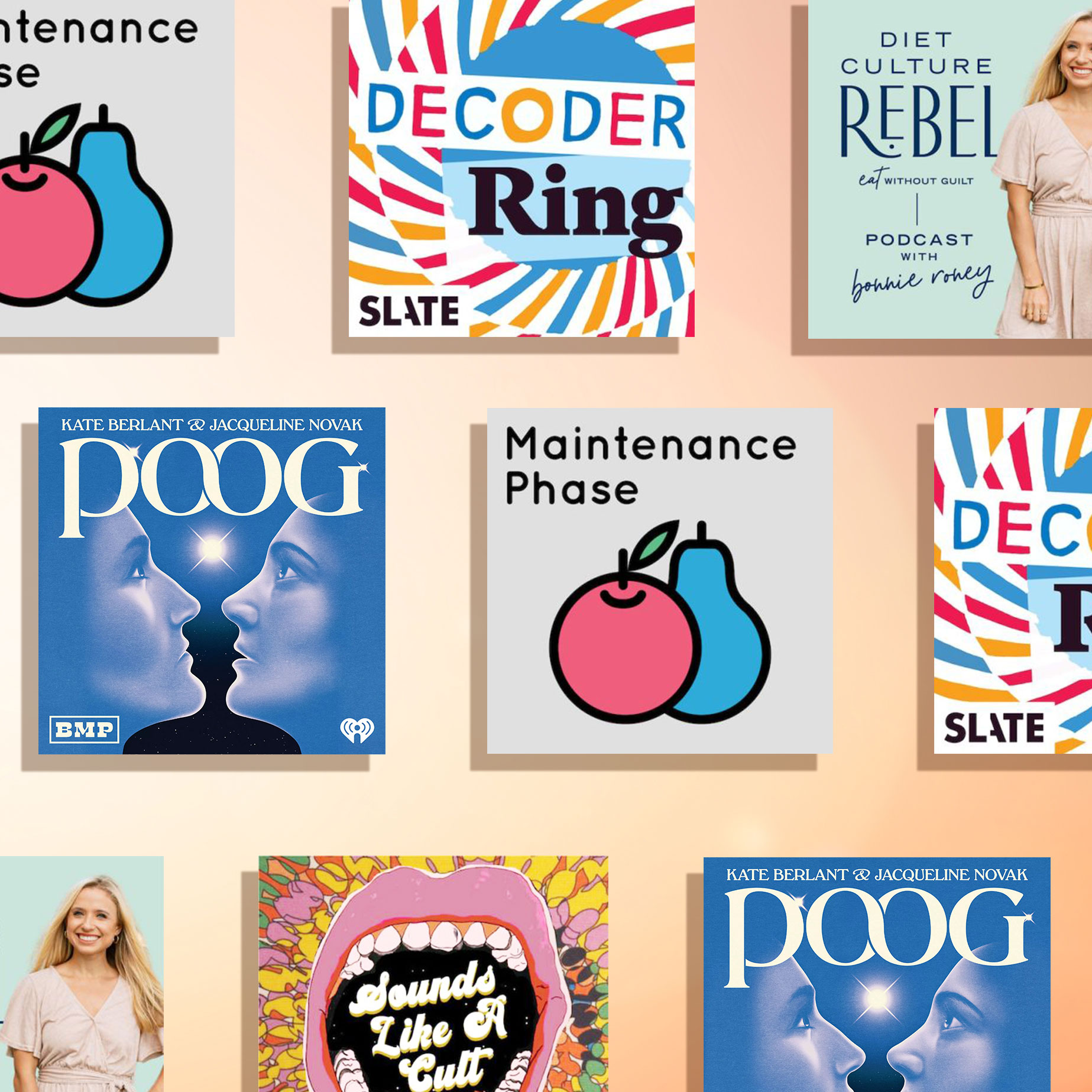 Podcasts That Are Rewriting the Concept of Wellness
Podcasts That Are Rewriting the Concept of WellnessFeatures Say goodbye to diet culture myths, expensive fads, and pseudo-science—and hello to frank, funny conversations about healthy minds and bodies.
By Cady Drell Published
-
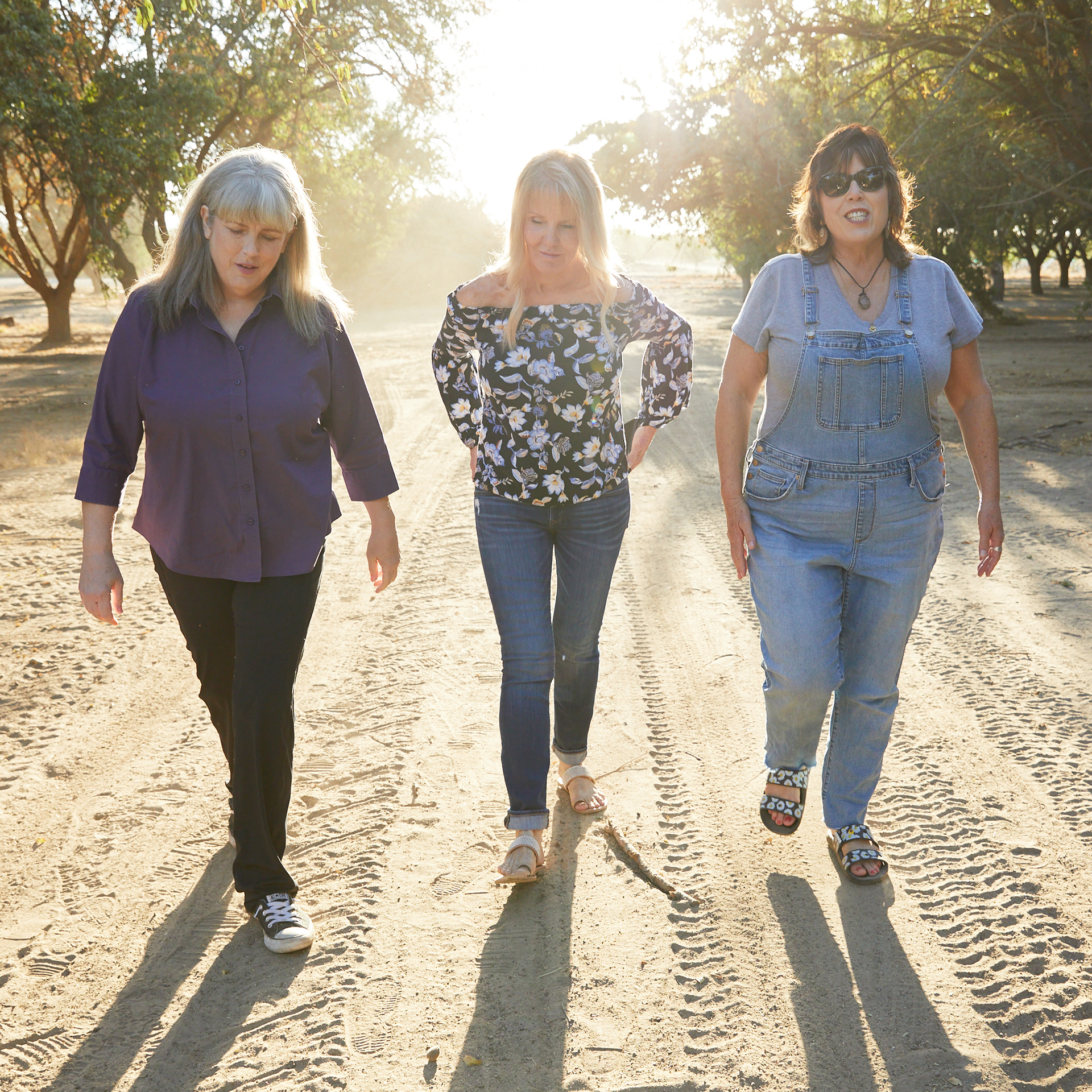 Of Murder and Motherhood
Of Murder and MotherhoodTheir children are gone but these women are united in their fight for justice and answers.
By Katya Cengel Published
-
 60 Gifts for Mom She'll Truly Love
60 Gifts for Mom She'll Truly LoveFrom creature comforts to luxe indulgences.
By Sara Holzman Published
-
 'Skye Falling' Deserves a Spot on Your Summer Reading List
'Skye Falling' Deserves a Spot on Your Summer Reading ListIn July, Marie Claire read Mia McKenzie's 'Skye Falling.' See what the #ReadWithMC community thought about the book here.
By Marie Claire Published
-
 What Makes an Olympic Moment?
What Makes an Olympic Moment?In the past it meant overcoming struggle...and winning. But why must athletes suffer to be inspiring?
By Megan DiTrolio Published
-
 What to Know About Adria Biles, Simone Biles' Sister and Biggest Supporter
What to Know About Adria Biles, Simone Biles' Sister and Biggest SupporterFeatures Here's what to know about the Team U.S.A. gymnast's supportive, lookalike sis.
By Katherine J. Igoe Last updated
-
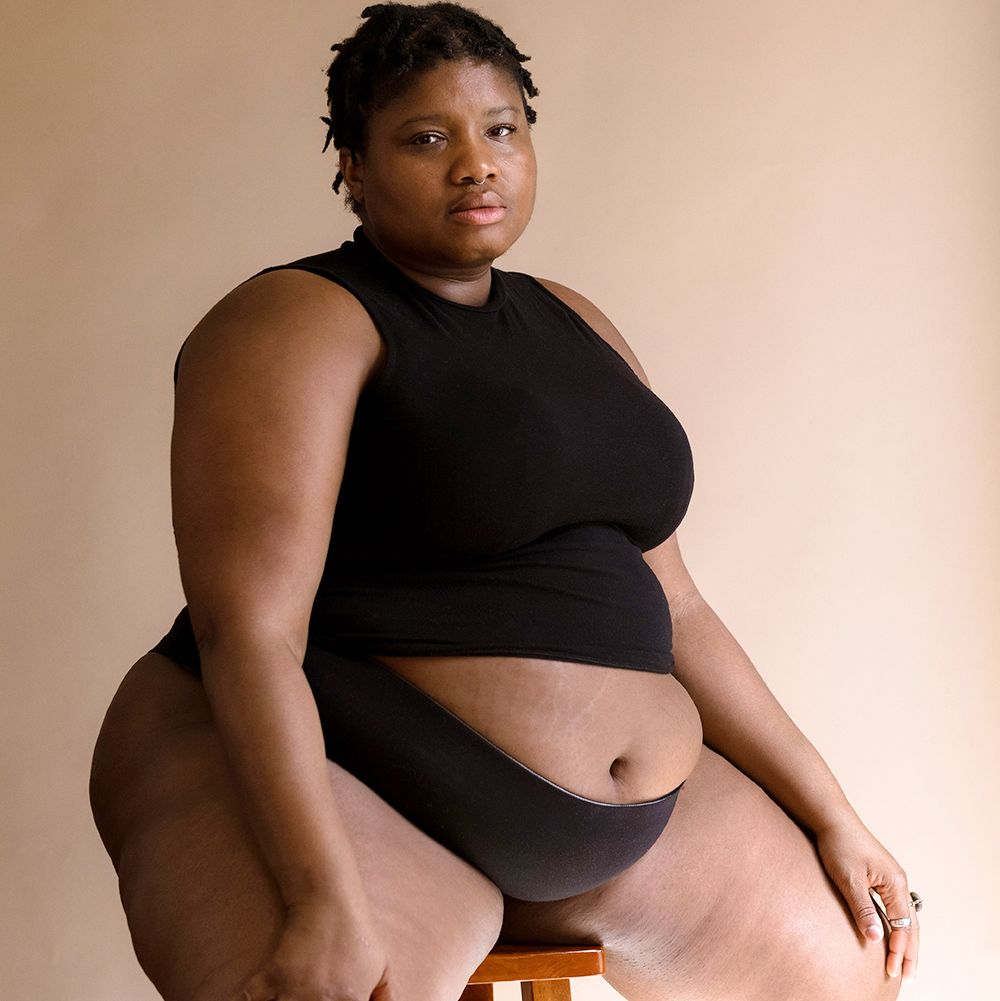 Jessamyn Stanley on Self-Acceptance and the Realities of American Yoga
Jessamyn Stanley on Self-Acceptance and the Realities of American YogaIn her new book, 'Yoke,' the yoga teacher and entrepreneur explores American yoga's link to capitalism, white supremacy, and more.
By Rachel Epstein Published